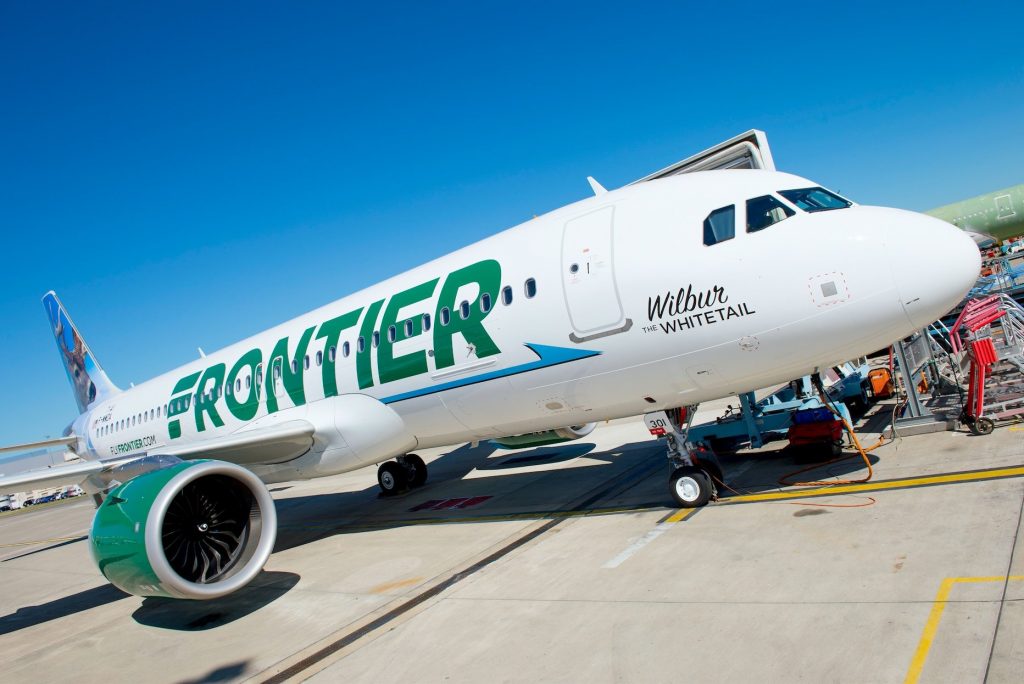Skift Take
It's hard to consistently make money in the airline industry. But Indigo Partners, led by former America West Airlines CEO Bill Franke, has an excellent track record. Once again, he is poised to make a big profit after buying an airline cheaply and taking it public.
Frontier Airlines on Friday confirmed one of the worst-kept secrets in the airline industry — it plans to go public soon under the symbol FRNT.
Its filing for an initial public offering comes a little more than three years after private equity firm Indigo Partners bought the then-struggling airline from Republic Airways in a deal valued at $145 million, including debt. Indigo, which had earlier turned Spirit Airlines into a no-frills carrier, slashed costs and changed Frontier’s model, turning it into the third ultra low cost U.S. airline, joining Spirit and Allegiant Air.
Indigo used a classic low-cost carrier playbook. It added seats to planes, and now packs more passengers on its Airbus 320s and A321s than any other U.S. airline. Where possible, it hired airport contractors instead of more highly-paid employees. And it started charging for nearly everything, from sodas to advanced seat assignments to carry-on bags. Passengers were less comfortable, but many have been paying outrageously low fares — sometimes as low as $19 for one-way trips between Chicago and Los Angeles.
In its filing, Frontier told prospective investors the company is profitable. In 2016, it said it made $200 million on total revenues of $1.7 billion. That was up from the previous year, when it said it earned $146 million on revenues of $1.6 billion.
The filing shows Frontier is making considerable money from fees and other non-ticket revenue, such as its frequent flyer program and co-branded credit card. In 2016, it said it made $48.57 per passenger in non-airfare revenue, accounting for 42 percent of all revenue. As recently as 2014, it said the per passenger figure was $21.69, representing 17 percent of revenue.
cost control
Costs have also fallen dramatically. Before Indigo acquired the company, Frontier was in the middle of the pack for costs — lower than big airlines like Delta and American, but far higher than Allegiant and Spirit.
Airlines use a measure called CASM, or cost per available seat mile, to measure costs against each other. An airline’s CASM is roughly equivalent to what an airline spends to fly one seat, one mile. At the end of 2013, Frontier’s CASM — not including what it spent on fuel — was 7.89 cents, more than 2 cents higher than Spirit’s.
At the end of December 2016, Frontier said its CASM, also not including fuel, was less than 6 cents and roughly equivalent to Spirit’s. (Larger legacy U.S. airlines, including American, Delta and United, typically have per-seat costs, not including fuel, higher than 9 cents, according to Frontier.)
Low fare done right
While Frontier’s operating model is nearly identical to Spirit’s, Indigo tweaked the approach slightly for Frontier. At times during its transition to an ultra low cost operator, Spirit executives treated passengers with disdain, with some apparently believing customers would continue to come back for the low fares, no matter how poor the service.
Early on, Frontier adopted the tagline, “Low Fares Done Right.” It tried to be more transparent about its fees, and retained some smaller amenities to keep customers content. Spirit, for example, charges for water, but Frontier does not. Frontier CEO Barry Biffle, who had been Spirit’s chief marketing officer, has said he learned at Spirit that the revenue from charging for water was not worth it considering how much passengers hated paying for it.
Frontier claims it is keeping passengers happy enough. It said it conducted a survey in February that showed more than 85 percent of passengers it contacted were repeat customers and 61 percent had flown Frontier twice or more in the past year. It also said passenger complaints to the U.S. Department of Transportation have decreased.
But Frontier has had its issues. Last winter, Frontier’s baggage handler in Denver repeatedly had trouble delivering bags, and some passengers said they waited five hours or more. In January, just after the fiasco, Frontier replaced its chief operating officer.
focus on medium-sized cities
Frontier told its investors it plans to expand in what it called medium-sized markets with populations between 1 million and 4.7 million. It said it sees opportunities for 650 new routes in the niche. The goal is to continue to “exploit overpriced and/or underserved markets” in the United States and Latin America,” the airline said.
At the end of 2015, Frontier had just 66 Airbus aircraft in its fleet, but the company said it has committed to adding 82 more aircraft by the end of 2021.
No U.S. airline has gone public since Virgin America in November 2014.
The Daily Newsletter
Our daily coverage of the global travel industry. Written by editors and analysts from across Skift’s brands.
Have a confidential tip for Skift? Get in touch
Tags: frontier airlines, spirit airlines, ultra low-cost carriers
Photo credit: Frontier, which operates an all-Airbus fleet, is preparing for an initial public offering. A. Doumenjou / Airbus
